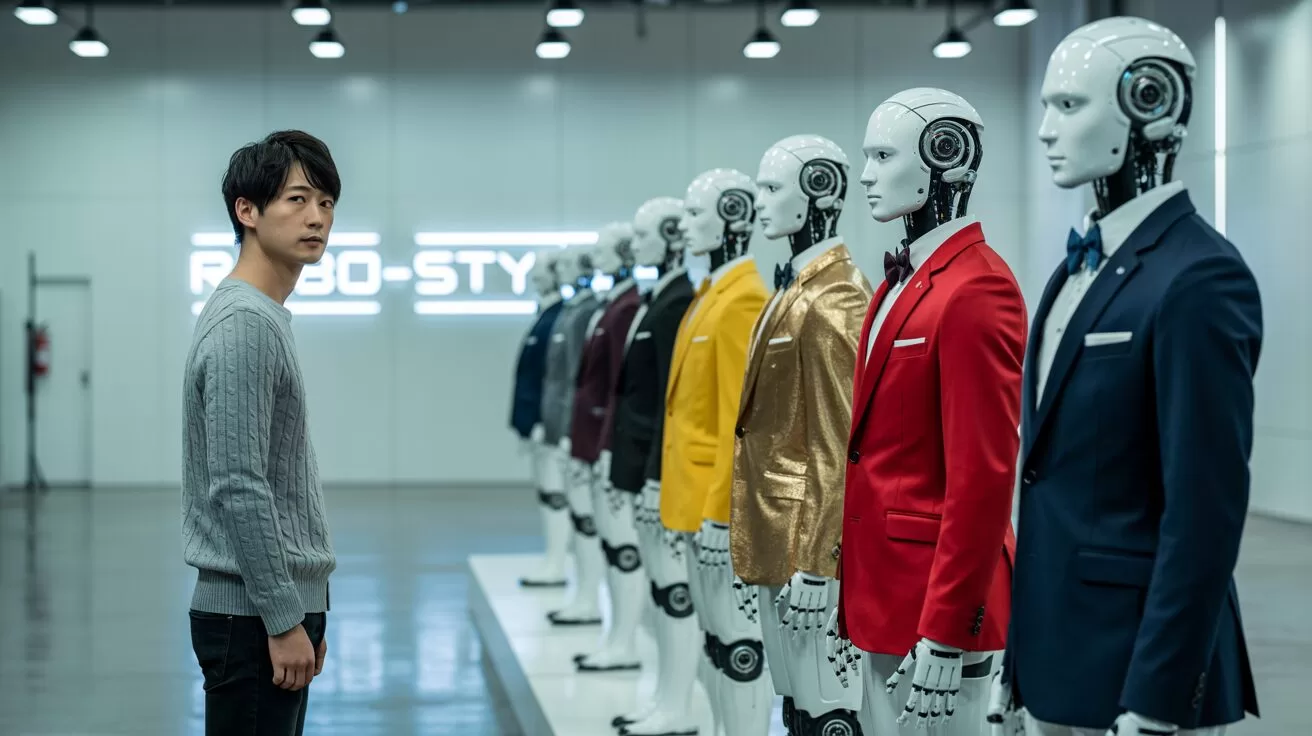Life
AI is Transforming Cat Care in Japan
Exploring the impact of AI on pet healthcare in Japan through the CatsMe! app.
Published
10 months agoon
By
AIinAsia
TL;DR:
- CatsMe!, an AI-driven smartphone app, helps cat owners in Japan detect feline pain with over 95% accuracy.
- The app has been used by over 230,000 customers since its launch, reflecting Japan’s growing reliance on pets due to its ageing population and low birth rate.
- AI and AGI technologies are playing an increasingly significant role in pet healthcare, offering promising solutions for early disease detection and improved quality of life for pets.
AI and Japan’s Feline Friends
In Japan, cats are more than just pets. They are cherished family members, and their wellbeing is a top priority for their owners. With an ageing population and a declining birth rate, pets have an outsized role in Japanese society. According to the Japan Pet Food Association, there were nearly 16 million pet cats and dogs in the country last year, surpassing the number of children under 15.
One such cat owner is Mayumi Kitakata, a 57-year-old single mother who has had cats as companions for over three decades. Kitakata is determined to give her ageing feline, Chi, the best care possible. To achieve this, she has turned to an unlikely ally – artificial intelligence (AI).
CatsMe!: The AI-Powered Cat Care Companion
In March, Kitakata became an early adopter of CatsMe!, an AI-driven smartphone application designed to detect when a cat is in pain. This innovative app reduces the guesswork involved in deciding when a vet visit is necessary, making life easier for both cats and their owners.
Developed by tech startup Carelogy and researchers from Nihon University, CatsMe! was trained on 6,000 cat images. Since its launch last year, the app has been used by over 230,000 customers. The developers claim that CatsMe! is more than 95% accurate, and its precision is expected to improve as it analyses more feline faces.
The Impact of AI on Pet Healthcare
Professor Kazuya Edamura of Nihon University explains that while veterinarians can determine to some extent if an animal is in pain, it’s more challenging for pet owners. He states, “Our statistics show that more than 70% of elderly cats have arthritis or pain, but only 2% of them actually go to a hospital.” The app serves as a tool to help owners decide if a situation is normal or requires veterinary attention.
For Kitakata, this technology offers peace of mind. She uses the app daily to monitor Chi’s health, keeping a close eye on his toilet activities and facial expressions. Having lost her previous cat, Soran, to cancer at just eight years old, Kitakata believes that early detection through AI could have made a difference.
The Future of AI and AGI in Pet Care
AI and AGI technologies are making significant strides in pet healthcare, offering solutions for early disease detection and improved quality of life for pets. As these technologies continue to evolve, we can expect to see more innovative applications that transform pet care, not just in Japan, but worldwide.
Comment and Share
Have you used AI or AGI technologies to improve the healthcare of your pets? Share your experiences with us and let us know what you think about the future of AI in pet care. Don’t forget to subscribe for updates on AI and AGI developments.
You may also like:
- Masterclass: Crafting Effective ChatGPT Prompts in Healthcare in 2024
- How AI and Wearables are Transforming Medicine
- Go Deeper: Asia’s AI Revolution – A Journey of Growth, Challenges, and Promise
- To learn more about CatsMe! tap here.
Author
Discover more from AIinASIA
Subscribe to get the latest posts sent to your email.
You may like
-


AI Glossary: All the Terms You Need to Know
-


Perplexity Assistant: The New AI Contender Taking on ChatGPT and Gemini
-


How ARTC is Leading the Charge in AI and Manufacturing
-


Where Can You Apply Generative vs. Analytical AI Effectively?
-


Adrian’s Arena: AI in 2024 – Key Lessons and Bold Predictions for 2025
-


The Race is On: AI Gets Real, Slow and Steady Wins the Race
Life
Whose English Is Your AI Speaking?
AI tools default to mainstream American English, excluding global voices. Why it matters and what inclusive language design could look like.
Published
3 days agoon
May 10, 2025By
AIinAsia
TL;DR — What You Need To Know
- Most AI tools are trained on mainstream American English, ignoring global Englishes like Singlish or Indian English
- This leads to bias, miscommunication, and exclusion in real-world applications
- To fix it, we need AI that recognises linguistic diversity—not corrects it.
English Bias In AI
Here’s a fun fact that’s not so fun when you think about it: 90% of generative AI training data is in English. But not just any English. Not Nigerian English. Not Indian English. Not the English you’d hear in Singapore’s hawker centres or on the streets of Liverpool. Nope. It’s mostly good ol’ mainstream American English.
That’s the voice most AI systems have learned to mimic, model, and prioritise. Not because it’s better. But because that’s what’s been fed into the system.
So what happens when you build global technology on a single, dominant dialect?
A Monolingual Machine in a Multilingual World
Let’s be clear: English isn’t one language. It’s many. About 1.5 billion people speak it, and almost all of them do so with their own twist. Grammar, vocabulary, intonation, slang—it all varies.
But when your AI tools—from autocorrect to resume scanners—are only trained on one flavour of English (mostly US-centric, polished, white-collar English), a lot of other voices start to disappear. And not quietly.
Speakers of regional or “non-standard” English often find their words flagged as incorrect, their accents ignored, or their syntax marked as a mistake. And that’s not just inconvenient—it’s exclusionary.
Why Mainstream American English Took Over
This dominance didn’t happen by chance. It’s historical, economic, and deeply structural.
The internet was largely developed in the US. Big Tech? Still mostly based there. The datasets used to train AI? Scraped from web content dominated by American media, forums, and publishing.
So, whether you’re chatting with a voice assistant or asking ChatGPT to write your email, what you’re hearing back is often a polished, neutral-sounding, corporate-friendly version of American English. The kind that gets labelled “standard” by systems that were never trained to value anything else.
When AI Gets It Wrong—And Who Pays the Price
Let’s play this out in real life.
- An AI tutor can’t parse a Nigerian English question? The student loses confidence.
- A resume written in Indian English gets rejected by an automated scanner? The applicant misses out.
- Voice transcription software mangles an Australian First Nations story? Cultural heritage gets distorted.
These aren’t small glitches. They’re big failures with real-world consequences. And they’re happening as AI tools are rolled out everywhere—into schools, offices, government services, and creative workspaces.
It’s “Englishes”, Plural
If you’ve grown up being told your English was “wrong,” here’s your reminder: It’s not.
Singlish? Not broken. Just brilliant. Indian English? Full of expressive, efficient, and clever turns of phrase. Aboriginal English? Entirely valid, with its own rules and rich oral traditions.
Language is fluid, social, and fiercely local. And every community that’s been handed English has reshaped it, stretched it, owned it.
But many AI systems still treat these variations as noise. Not worth training on. Not important enough to include in benchmarks. Not profitable to prioritise. So they get left out—and with them, so do their speakers.
Towards Linguistic Justice in AI
Fixing this doesn’t mean rewriting everyone’s grammar. It means rewriting the technology.
We need to stop asking AI to uphold one “correct” form of English, and start asking it to understand the many. That takes:
- More inclusive training data – built on diverse voices, not just dominant ones
- Cross-disciplinary collaboration – between linguists, engineers, educators, and community leaders
- Respect for language rights – including the choice not to digitise certain cultural knowledge
- A mindset shift – from standardising language to supporting expression
Because the goal isn’t to “correct” the speaker. It’s to make the system smarter, fairer, and more reflective of the world it serves.
Ask Yourself: Whose English Is It Anyway?
Next time your AI assistant “fixes” your sentence or flags your phrasing, take a second to pause. Ask: whose English is this system trying to emulate? And more importantly, whose English is it leaving behind?
Language has always been a site of power—but also of play, resistance, and identity. The way forward for AI isn’t more uniformity. It’s more Englishes, embraced on their own terms.
You may also like:
- How Singtel Used AI to Bring Generations Together for Singapore’s SG60
- Revolutionising Workspaces: The Surge of AI and ChatGPT in Indian Companies
- Or try out the free version of Claude AI by tapping here.
Author
Discover more from AIinASIA
Subscribe to get the latest posts sent to your email.
Business
Build Your Own Agentic AI — No Coding Required
Want to build a smart AI agent without coding? Here’s how to use ChatGPT and no-code tools to create your own agentic AI — step by step.
Published
4 days agoon
May 9, 2025By
AIinAsia
TL;DR — What You Need to Know About Agentic AI
- Anyone can now build a powerful AI agent using ChatGPT — no technical skills needed.
- Tools like Custom GPTs and Make.com make it easy to create agents that do more than chat — they take action.
- The key is to start with a clear purpose, test it in real-world conditions, and expand as your needs grow.
Anyone Can Build One — And That Includes You
Not too long ago, building a truly capable AI agent felt like something only Silicon Valley engineers could pull off. But the landscape has changed. You don’t need a background in programming or data science anymore — you just need a clear idea of what you want your AI to do, and access to a few easy-to-use tools.
Whether you’re a startup founder looking to automate support, a marketer wanting to build a digital assistant, or simply someone curious about AI, creating your own agent is now well within reach.
What Does ‘Agentic’ Mean, Exactly?
Think of an agentic AI as something far more capable than a standard chatbot. It’s an AI that doesn’t just reply to questions — it can actually do things. That might mean sending emails, pulling information from the web, updating spreadsheets, or interacting with third-party tools and systems.
The difference lies in autonomy. A typical chatbot might respond with a script or FAQ-style answer. An agentic AI, on the other hand, understands the user’s intent, takes appropriate action, and adapts based on ongoing feedback and instructions. It behaves more like a digital team member than a digital toy.
Step 1: Define What You Want It to Do
Before you dive into building anything, it’s important to get crystal clear on what role your agent will play.
Ask yourself:
- Who is going to use this agent?
- What specific tasks should it be responsible for?
- Are there repetitive processes it can take off your plate?
For instance, if you run an online business, you might want an agent that handles frequently asked questions, helps users track their orders, and flags complex queries for human follow-up. If you’re in consulting, your agent could be designed to book meetings, answer basic service questions, or even pre-qualify leads.
Be practical. Focus on solving one or two real problems. You can always expand its capabilities later.
Step 2: Pick a No-Code Platform to Build On
Now comes the fun part: choosing the right platform. If you’re new to this, I recommend starting with OpenAI’s Custom GPTs — it’s the most accessible option and designed for non-coders.
Custom GPTs allow you to build your own version of ChatGPT by simply describing what you want it to do. No technical setup required. You’ll need a ChatGPT Plus or Team subscription to access this feature, but once inside, the process is remarkably straightforward.
If you’re aiming for more complex automation — such as integrating your agent with email systems, customer databases, or CRMs — you may want to explore other no-code platforms like Make.com (formerly Integromat), Dialogflow, or Bubble.io. These offer visual builders where you can map out flows, connect apps, and define logic — all without needing to write a single line of code.
Step 3: Use ChatGPT’s Custom GPT Builder
Let’s say you’ve opted for the Custom GPT route — here’s how to get started.
First, log in to your ChatGPT account and select “Explore GPTs” from the sidebar. Click on “Create,” and you’ll be prompted to describe your agent in natural language. That’s it — just describe what the agent should do, how it should behave, and what tone it should take. For example:
“You are a friendly and professional assistant for my online skincare shop. You help customers with questions about product ingredients, delivery options, and how to track their order status.”
Once you’ve set the description, you can go further by uploading reference materials such as product catalogues, FAQs, or policies. These will give your agent deeper knowledge to draw from. You can also choose to enable additional tools like web browsing or code interpretation, depending on your needs.
Then, test it. Interact with your agent just like a customer would. If it stumbles, refine your instructions. Think of it like coaching — the more clearly you guide it, the better the output becomes.
Step 4: Go Further with Visual Builders
If you’re looking to connect your agent to the outside world — such as pulling data from a spreadsheet, triggering a workflow in your CRM, or sending a Slack message — that’s where tools like Make.com come in.
These platforms allow you to visually design workflows by dragging and dropping different actions and services into a flowchart-style builder. You can set up scenarios like:
- A user asks the agent, “Where’s my order?”
- The agent extracts key info (e.g. email or order number)
- It looks up the order via an API or database
- It responds with the latest shipping status, all in real time
The experience feels a bit like setting up rules in Zapier, but with more control over logic and branching paths. These platforms open up serious possibilities without requiring a developer on your team.
Step 5: Train It, Test It, Then Launch
Once your agent is built, don’t stop there. Test it with real people — ideally your target users. Watch how they interact with it. Are there questions it can’t answer? Instructions it misinterprets? Fix those, and iterate as you go.
Training doesn’t mean coding — it just means improving the agent’s understanding and behaviour by updating your descriptions, feeding it more examples, or adjusting its structure in the visual builder.
Over time, your agent will become more capable, confident, and useful. Think of it as a digital intern that never sleeps — but needs a bit of initial training to perform well.
Why Build One?
The most obvious reason is time. An AI agent can handle repetitive questions, assist users around the clock, and reduce the strain on your support or operations team.
But there’s also the strategic edge. As more companies move towards automation and AI-led support, offering a smart, responsive agent isn’t just a nice-to-have — it’s quickly becoming an expectation.
And here’s the kicker: you don’t need a big team or budget to get started. You just need clarity, curiosity, and a bit of time to explore.
Where to Begin
If you’ve got a ChatGPT Plus account, start by building a Custom GPT. You’ll get an immediate sense of what’s possible. Then, if you need more, look at integrating Make.com or another builder that fits your workflow.
The world of agentic AI is no longer reserved for the technically gifted. It’s now open to creators, business owners, educators, and anyone else with a problem to solve and a bit of imagination.
What kind of AI agent would you build — and what would you have it do for you first? Let us know in the comments below!
You may also like:
- How To Start Using AI Agents To Transform Your Business
- Revolution Ahead: Microsoft’s AI Agents Set to Transform Asian Workplaces
- AI Chatbots: 10 Best ChatGPTs in the ChatGPT Store
- Or tap here to try this out now at ChatGPT by tapping here.
Author
Discover more from AIinASIA
Subscribe to get the latest posts sent to your email.
Life
Which ChatGPT Model Should You Choose?
Confused about the ChatGPT model options? This guide clarifies how to choose the right model for your tasks.
Published
4 days agoon
May 9, 2025By
AIinAsia
TL;DR — What You Need to Know:
- GPT-4o is ideal for summarising, brainstorming, and real-time data analysis, with multimodal capabilities.
- GPT-4.5 is the go-to for creativity, emotional intelligence, and communication-based tasks.
- o4-mini is designed for speed and technical queries, while o4-mini-high excels at detailed tasks like advanced coding and scientific explanations.
Navigating the Maze of ChatGPT Models
OpenAI’s ChatGPT has come a long way, but its multitude of models has left many users scratching their heads. If you’re still confused about which version of ChatGPT to use for what task, you’re not alone! Luckily, OpenAI has stepped in with a handy guide that outlines when to choose one model over another. Whether you’re an enterprise user or just getting started, this breakdown will help you make sense of the options at your fingertips.
So, Which ChatGPT Model Makes Sense For You?
Currently, ChatGPT offers five models, each suited to different tasks. They are:
- GPT-4o – the “omni model”
- GPT-4.5 – the creative powerhouse
- o4-mini – the speedster for technical tasks
- o4-mini-high – the heavy lifter for detailed work
- o3 – the analytical thinker for complex, multi-step problems
Which model should you use?
Here’s what OpenAI has to say:
- GPT-4o: If you’re looking for a reliable all-rounder, this is your best bet. It’s perfect for tasks like summarising long texts, brainstorming emails, or generating content on the fly. With its multimodal features, it supports text, images, audio, and even advanced data analysis.
- GPT-4.5: If creativity is your priority, then GPT-4.5 is your go-to. This version shines with emotional intelligence and excels in communication-based tasks. Whether you’re crafting engaging narratives or brainstorming innovative ideas, GPT-4.5 brings a more human-like touch.
- o4-mini: For those in need of speed and precision, o4-mini is the way to go. It handles technical queries like STEM problems and programming tasks swiftly, making it a strong contender for quick problem-solving.
- o4-mini-high: If you’re dealing with intricate, detailed tasks like advanced coding or complex mathematical equations, o4-mini-high delivers the extra horsepower you need. It’s designed for accuracy and higher-level technical work.
- o3: When the task requires multi-step reasoning or strategic planning, o3 is the model you want. It’s designed for deep analysis, complex coding, and problem-solving across multiple stages.
Which one should you pick?
For $20/month with ChatGPT Plus, you’ll have access to all these models and can easily switch between them depending on your task.
But here’s the big question: Which model are you most likely to use? Could OpenAI’s new model options finally streamline your workflow, or will you still be bouncing between versions? Let me know your thoughts!
You may also like:
- What is ChatGPT Plus?
- ChatGPT Plus and Copilot Pro – both powered by OpenAI – which is right for you?
- Or try the free ChatGPT models by tapping here.
Author
Discover more from AIinASIA
Subscribe to get the latest posts sent to your email.

Whose English Is Your AI Speaking?

Edit AI Images on the Go with Gemini’s New Update

Build Your Own Agentic AI — No Coding Required
Trending
-

 Marketing3 weeks ago
Marketing3 weeks agoPlaybook: How to Use Ideogram.ai (no design skills required!)
-

 Life2 weeks ago
Life2 weeks agoWhatsApp Confirms How To Block Meta AI From Your Chats
-

 Business2 weeks ago
Business2 weeks agoChatGPT Just Quietly Released “Memory with Search” – Here’s What You Need to Know
-

 Tools3 days ago
Tools3 days agoEdit AI Images on the Go with Gemini’s New Update
-

 Life1 week ago
Life1 week agoGeoffrey Hinton’s AI Wake-Up Call — Are We Raising a Killer Cub?
-

 Life7 days ago
Life7 days agoToo Nice for Comfort? Why OpenAI Rolled Back GPT-4o’s Sycophantic Personality Update
-

 Life3 days ago
Life3 days agoWhose English Is Your AI Speaking?
-

 Life6 days ago
Life6 days agoWhy ChatGPT Turned Into a Grovelling Sycophant — And What OpenAI Got Wrong






























